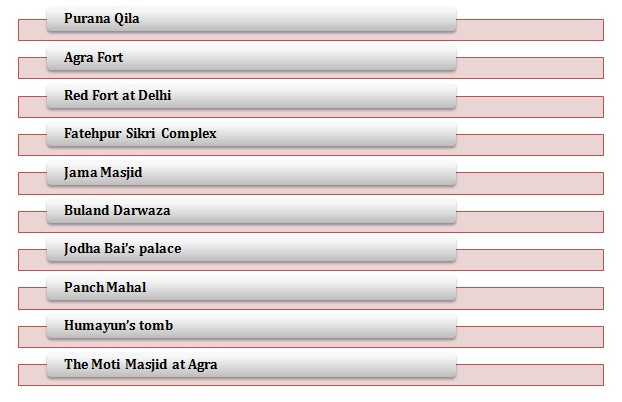

The Mughal dynasty was named the Muslim dynasty and they have the Turkic-Mongol origin. This dominion is famous for its rule for approximately two centuries. The familiarity of this empire lies in its administrative organization. This dominion was founded or established by a well-known ruler Babur whereas Aurangzeb was the last king of this empire.
Different travellers describe the socio-economic condition of India and the traders also give much information. These peoples describe the prosperity as well as the wealth of this country and the luxurious lives of the kings. Some peoples present the suffering and poor condition of this country. They describe the common people like the artisans as well as the peasants.
The Mughals were considered to be nobles and they were the foreigners such as Turks and Afghans. They were paid huge amounts of salaries but their expenses were too high. All of them consist of many servants, elephants, as well as horses. Their dresses were made of cotton and silk clothes whereas the poor have the minimal dress.
The travellers describe that the kings were leather-made shoes and their costs were high. The normal peoples eat rice, millet, as well as pulses. The coastal areas consist of fishes and milk were surplus then. In that area sugar as well as salts was expensive whereas oil and ghee were rated less.
The researches show that India had a 125 million population in the 17th century. That was the reason for cultivating different crops such as wheat, barley, pulses, gram, and pulses. There were some commercial crops and were indigo, oil seeds, cotton and sugarcane. It was observed that the 18th century also presented two new crops they were tobacco and maize. Fresh techniques for agriculture were discovered and the system of import-export was established.
The trading community in this country developed and there were some divisions among the classes. Seth and Bohra were the long-distance traders whereas Banik were the local traders. Banjaras were another class that is famous for carrying bulk goods. Hindus, Jains and Muslims were the merchants from Gujrat but Oswals, Maheshwari's, and Agarwals were named Marwaris.
Two important communities for trade were the Chettis and Muslim merchants. Bengal was considered to be famous for exporting silk, muslin, rice, and sugar. Gujrat was the point to enter for the foreign goods and some essential metals for import were tin, copper, warhorses, and ivory.
This period showed remarkable as well as worldwide improvement in the activity of cultures. The development has been founded on different fields such as art and architecture, painting, music and literature. The culture of Turko-Iranian was bought to India by the Mughals and the traditions of India were blended into the culture of Turko-Iranian.
There were famous gardens in that era and some of them are Nishat bagh in Kashmir, Shalimar bagh in Lahore, and Pinjore garden in Punjab. Sher Shah contributed to the creation of the mausoleum at Sasaram in Bihar. The Purana Qila near Delhi Akbar was famous for building many forts like Agra Fort and other forts at Lahore and Allahabad.

Shah Jahan was notable for building the Red Fort at Delhi and the attraction of this fort were Rang Mahal, Diwan-i-Am and Diwan-i-Khaswas. Fatehpur Sikri (City of Victory) was a well-known contribution of Akbar. Jama Masjid is an important building that was established by this man and his other contributions are Jodha Bai’s palace and Panch Mahal.
The developments of music, as well as painting, were the most important factors of that era. The painting was bought into existence by Humayun while he was in Persia. This man introduced two notable painters to India Mir Sayyid Ali and Abdal Samad. On the other hand, Akbar illustrated different texts on religion and literature.
Famous artists who stayed in the court of Akbar were Baswan, Miskina and Daswant. Mahabharata and Ramayana’s Persian version were miniature and Akbar also makes an art studio. Jahangir introduces Abul Hasan, Bishan Das, Madhu, Anant, Manohar, Govardhan and Ustad Mansur who were the famous painters of that era. Akbar was famous for patronising Tansen of Gwalior and Shah Jahan and Jahangir also loves music.
The reign of Akbar witnessed the presence of the Persian language. This era also showed Ain-i-Akbari and Akabar Nama and was written by Abul Fazl. Jahangir’s autobiography, Tuzuk-i-Jahangiri was a famous contribution to this era. Shah Jahan Nama was written by Nama and Inayat and some languages like Bengali, Oriya, Rajasthani and Gujarati have been developed in this era. A famous poet of this era was Tulsidas who wrote Ramcharitmanas. This era also shows some devotional as well as painting works
Conquer of Kabul and Ghazni by the ruler Babur become the first step for ruling this country. Gradually this person captures Delhi by defeating Lodhi in Panioat’s 1st battle. Humayun made a tomb which has historical importance and Akbar was a notable ruler of this era. Jehangir maintains the system of administration of his father as well as Shah Jahan created the famous building Taj Mahal.
Q. Which Mughal kings ruled in India?
Some of the kings of this period are Babur, Aurangzeb, Humayun, Sher Shah Suri, Jehangir, and Akbar. They have a lot of contributions to the development of this country
Q. Which king came first in the period?
The first king of the era of Mughals was Babur and he dominates this country between the years 1526 and 1530. This man beats Lodhi in 1st Panipat’s battle and then establishes a huge empire.